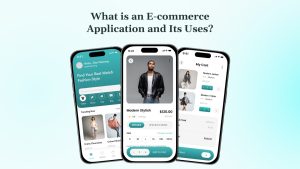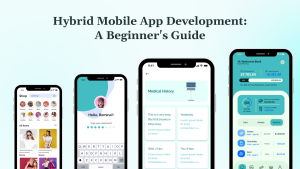In 2025, enterprise mobile apps will have become critical assets for businesses seeking agility and growth. These apps connect field teams, customers, and partners in real time. They drive efficiency through tailored workflows, the integration of legacy systems, and offline-ready experiences.
Developing an enterprise-grade app requires meticulous planning, encompassing security, UX, scalability, and analytics. This guide distills industry best practices, platform strategies, and real-world process steps.
You may be willing to explore low-code tools or full custom builds; whichever you choose, you will gain clarity on how to plan, launch, and optimize mobile apps that can withstand scale and complexity. Let us begin by understanding what makes enterprise mobile apps unique.
Key Takeaways
- Learn why security, scalability, and integration elevate these apps above consumer-grade solutions.
- Understand key drivers, including streamlined workflows, customer engagement, legacy modernization, and AI integration.
- Explore seven types of enterprise mobile apps and determine which one best fits your strategy.
- Master platform choice, compliance, KPIs, integrations; then step through design, deployment, and training.
- Dive into security, post-launch refinement, change management, and how DEVtrust’s platform-flexible expertise supports your needs.
What Makes Enterprise Mobile Apps Unique?
Enterprise mobile apps differ fundamentally from consumer apps. They serve strategic business functions, support legacy integrations, enforce tight security, and deliver real-time value to internal and external stakeholders. These are typically developed with the assistance of cloud platforms to reduce lengthy development periods.
Enterprise mobile app development is now a collaborative and modern process. Here, IT teams and businesses can collaborate to address scalability limitations and reduce unnecessary workload.
In this section, we examine the key attributes that distinguish enterprise-grade apps and explain why they are distinct from other types of apps.
1. Real-Time Integration With Systems
Enterprise apps integrate with back-office systems, including Enterprise Resource Planning (ERP), Customer Relationship Management (CRM), Business Intelligence (BI) tools, and industry-specific legacy platforms. They act as real-time data conduits. Changes in one system update others immediately. This sync ensures that users have consistent information across platforms, reducing the need for manual data reconciliation.
2. Designed For Security And Compliance
Security is not an afterthought. Enterprise apps embed encryption, multi-factor authentication, role-based access control, and compliance mechanisms from the outset. Many target regulatory environments, like GDPR, HIPAA, or PCI DSS.
According to a Symantec report, over half of mobile apps contain hardcoded credentials or shared tokens, an unacceptable risk in enterprise contexts. Enterprise apps mitigate that via a secure-by-design architecture.
3. Built For Offline Use And Data Sync
Many enterprise users work in low-connectivity zones, such as warehouses, remote sites, or underground facilities. Enterprise apps must function offline, caching data locally and synchronizing once online again. This ensures uninterrupted productivity. Once connectivity is restored, data is bidirectionally swapped to preserve consistency, even under intermittent network conditions.
4. Role‑Based Access And Fine-Grained Permissions
Unlike consumer apps, enterprise solutions enforce strict access control. User roles are defined at granular levels, such as who can view, edit, approve, or manage tasks. This segmentation prevents data leaks and enforces auditability.
Access flows align with business roles, from intern to manager to external partner, with permissions tailored accordingly. Read about how DEVtrust helped Moveit4U with real-time TMS app integrations like role-based access control.
5. Real-Time Analytics And Dashboards
Enterprise apps surface actionable insights directly from mobile interfaces, providing a seamless user experience. Executives, sales teams, or field technicians can view dashboards, KPIs, and reports in-app. Real-time analytics power decision-making at the point of action. This capability transforms mobile devices into operational instruments, not just communication tools.
6. Scalability And Architecture Designed For Growth
Enterprise apps support hundreds or thousands of concurrent users across geographies. Their backend architecture uses scalable cloud infrastructure, API-driven design, containerization, and performance monitoring. This enables growth without compromising speed or reliability. The design also allows phased rollout, modular feature additions, and flexible updates .
Enterprise mobile apps enable organizations to bring core business capabilities into the field, allowing them to operate more efficiently and effectively. These traits make them indispensable tools for enhancing productivity, ensuring compliance, and driving innovation. So, why do enterprises require mobile app development?
Why Is Enterprise Mobile App Development Needed?
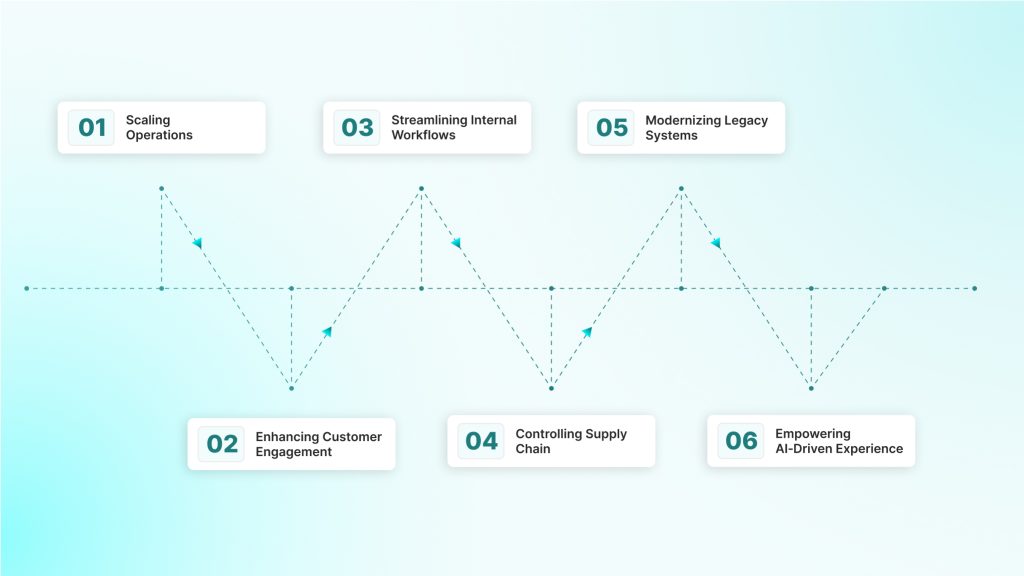
Enterprise mobile applications serve mission-critical business functions. They support complex operations, empower real-time decisions, and fuel innovation across large organizations. Below, we detail the key reasons why enterprise-grade mobile solutions are essential in 2025.
1. Scaling Operations
Enterprise mobile apps help organizations expand while maintaining efficiency. They provide teams with access to essential tools and data, enabling them to handle larger workloads.
Whether you are managing field staff, remote branches, or cross-border offices, enterprise apps ensure operational consistency and visibility across the entire organization. Companies rely on these apps to scale without losing control or performance.
2. Enhancing Customer Engagement
Enterprise apps are not just for internal use; they also touch customers and partners. They enable real-time interactions, personalized communication channels, and faster service workflows.
Instead of waiting for emails or calls, users access support, feedback, and notifications instantly. This speed and responsiveness boost customer loyalty and brand satisfaction, making enterprise apps a strategic interface for external engagement.
3. Streamlining Internal Workflows
Enterprise apps consolidate scattered internal tools and eliminate paper processes. They replace checklists, forms, and manual logs with digital workflows that are accessible on mobile devices. Teams complete tasks, approve requests, and share updates in-app.
This eliminates duplication, reduces delays, and speeds up execution. The result is leaner process flows and fewer manual handoffs, which are essential for complex corporate environments.
4. Controlling Supply Chain
Businesses with logistics, inventory, and delivery operations rely on mobile apps to track real-time data across their supply chains. These apps integrate with inventory systems, barcode scanning tools, and scheduling platforms.
They allow managers to monitor stock, confirm deliveries, and adjust workflows on the go. This live visibility strengthens control, reduces errors, and supports end-to-end supply chain efficiency.
5. Modernizing Legacy Systems
Many enterprises rely on older backend systems such as ERP, CRM, and mainframes that lack mobile interfaces. Enterprise mobile apps bridge that gap by overlaying modern experiences on top of legacy infrastructure.
Users can import, access, or update data without replacing core systems. Mobile interfaces breathe new life into older platforms while avoiding the need for costly full-scale replacements.
6. Empowering AI‑Driven Experiences
Enterprise mobile apps serve as delivery channels for AI-powered features, including smart insights, predictive alerts, voice assistants, and chatbots. They surface intelligence close to users like field technicians, sales teams, or executives, right in the flow of work.
AI integration within apps transforms static workflows into adaptive, context-aware experiences. Users receive value in real-time, and enterprises unlock new insights from user behavior.
Enterprise mobile app development is no longer optional for large-scale organizations in 2025. These apps drive productivity, control complexity, and power next-gen user experiences at scale and with governance. Moving on, let’s explore the types of enterprise mobile applications.
Types of Enterprise Mobile Applications
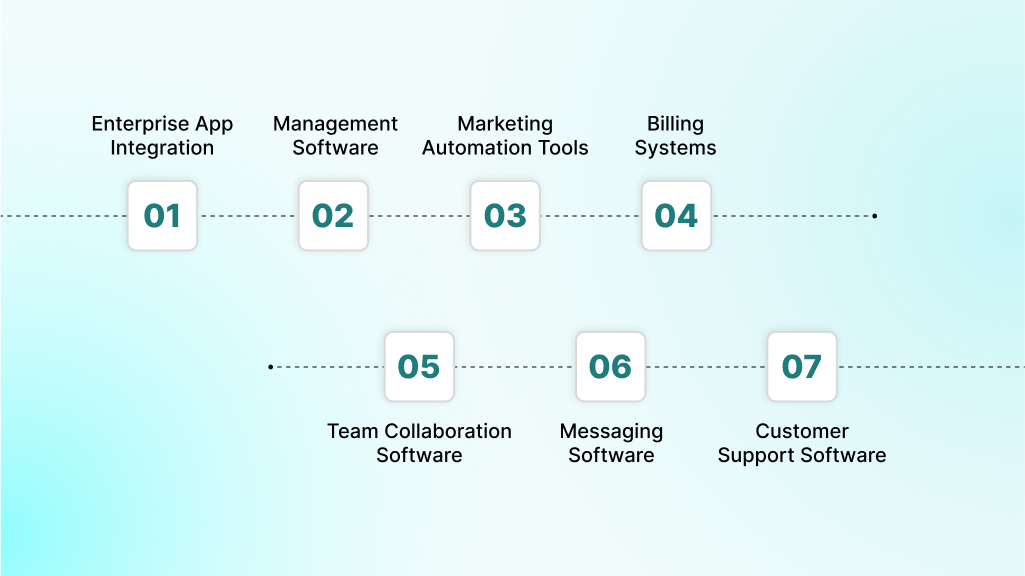
Enterprise mobile applications serve a wide range of operational needs within organizations. These apps help businesses integrate systems, streamline workflows, and deliver specialized tools tailored to specific roles. Below, we explore the most common app categories and their business contexts.
1. Enterprise Application Integration (EAI)
Enterprise Application Integration (EAI) applications serve as connectors between multiple systems, including ERP, CRM, SCM, and BI tools. Rather than being standalone, these apps ensure smooth data flow and consistency across platforms. They eliminate manual transfers, and unified dashboards reflect real-time business metrics.
2. Management Software
This category includes core administrative tools such as ERP, HR, financial, and business process management applications. They support tasks such as payroll, resource planning, reporting, and workflow approvals. Management apps consolidate critical functions into a single mobile interface.
3. Marketing Automation Software
Marketing automation apps enable the management of campaigns and leads on the go. They integrate email, SMS, chatbots, and campaign analytics into one platform. Marketers can send targeted messages, view campaign performance, and optimize on the fly. They can even facilitate easier inter-customer communication on their application. Know more about DEVtrust’s smart video meeting and messaging features on Spero’s application.
4. Billing Systems
Billing mobile apps handle invoicing, transaction tracking, and payment processing. They sync with accounting or ERP systems and often operate within offline-first environments. These tools streamline financial operations and improve cash flow management.
5. Team Collaboration Software
Collaboration apps, such as Slack, or custom tools help teams communicate, share files, and manage tasks. They combine messaging, video, project boards, and document sharing into a unified ecosystem. These apps break down silos and foster teamwork across departments.
6. Messaging Software
Enterprise messaging tools support internal communication and external customer or partner interactions. They offer chat, voice/video, file sharing, and notifications within a secure, branded context. Messaging apps bridge user communication with enterprise processes.
7. Customer Support Software
Support apps enable field agents or service teams to view tickets, manage cases, and access knowledge bases. They automate response workflows and integrate with CRM. Users can handle inquiries, escalate issues, and resolve cases from their mobile interface.
These app types reflect the diverse functionality required in enterprise contexts. Although labeled separately, many real-world apps blend features across categories to solve unique business problems.
Each type plays a distinct role in driving operational efficiency and strategic alignment. Before you move toward development, consider some key planning considerations.
Key Planning Considerations Before Enterprise Mobile App Development
Enterprise mobile app success depends on solid planning before any code is written. This section outlines five essential focus areas: defining your goals, ensuring compliance, selecting the right platform, planning integrations, and establishing robust KPIs. Thoughtful attention here ensures your app meets strategic, technical, and operational needs.
Development Aims
Start with a clear understanding of what your app is intended to accomplish. Is it designed to streamline workflows, support field operations, or deliver real‑time analytics? Defining your aims helps prevent unnecessary features and ensures your roadmap aligns with business impact.
Early alignment with stakeholders ensures that expectations and priorities remain consistent throughout the development process.
Compliance Priorities
Enterprise mobile apps often handle sensitive data. Compliance demands, such as GDPR, HIPAA, or PCI, must shape the design from the start.
Many consumer apps unintentionally expose credentials or fall short in terms of policy transparency, which is unacceptable in regulated environments. Planning for compliance reduces risk, avoids costly retrofits, and protects brand integrity.
Choice Of Platform
Choosing between native, hybrid, or low‑code platforms is critical. Each has trade-offs in speed, customization, performance, and long-term maintainability.
DEVtrust, for example, offers full custom and low‑code options depending on project complexity and client goals. Selecting the right approach early avoids costly rewrites and ensures your app can scale with evolving business use cases.
Enterprise‑grade Integrations
Enterprise apps rarely exist in isolation. They integrate with ERP, CRM, SCM, communication platforms, AI tools, and legacy systems.
Planning must include a technical strategy to map APIs, manage data formats, and enforce consistency without impacting live operations. In many regulated industries, such as healthcare, seamless integration with legacy platforms remains among the most formidable challenges to delivering real value.
KPIs
Tracking the right metrics ensures your app is driving value. Focus on KPIs such as user retention, engagement, session frequency, crash rate, and feature adoption. Apps with strong Day 1 retention, above 25%, are significantly more likely to succeed in the long term.
In enterprise apps, delivering a seamless user experience, particularly offline access, clear data synchronization, and intuitive security, improves engagement and retains users in the long term. These insights inform optimization and guide continuous improvement.
By rigorously defining objectives, addressing compliance, choosing the appropriate platform, planning enterprise-grade integrations, and tracking the right KPIs, your app is positioned for strategic impact from launch to scale. Enterprise mobile app development also boasts some essential features and UX expectations.
Essential Features & UX Expectations For Enterprise Mobile App Development
Enterprise mobile apps must strike a balance between powerful features and intuitive design. Beyond security, users expect precise role support, seamless data sharing, and reliable cloud storage. This section dives into these critical features and UX needs.
User Roles
Enterprise applications often operate across multiple user levels, from interns to executives. Defining user roles and permissions clearly prevents confusion and enhances productivity. The UX should tailor each experience to a user’s responsibilities.
For instance, managers might see dashboards and approvals, while field agents access scan tools or task lists. Effective apps maintain consistency while adapting layouts and workflows to match role-based needs.
This customization supports both efficiency and security. Users get only the functions they need, reducing clutter and risk. A thoughtfully designed role structure also makes onboarding smoother and administration clearer.
Data Sharing
Team collaboration and success hinge on fluid, secure data sharing. Enterprise apps require built-in mechanisms to facilitate this, such as shared task updates, in-app comments, or notification systems.
UX design should make sharing intuitive, with clear buttons, simple flows, and instant sync feedback. Users expect their actions, such as uploading a file or assigning a task, to be visible to others immediately. Incorporating inline alerts or real-time counters builds confidence and encourages adoption.
When data-sharing is smooth and transparent, teams stay aligned. It also reduces the need for external tools or manual updates, keeping all activity contained within one secure environment.
Security
Security forms the backbone of enterprise mobile apps. It must be embedded in both architecture and user experience. In this section, we’ll explore essential security approaches and their UX implications.
Enterprise apps face serious security threats. Research has found that 43% of top enterprise mobile apps are vulnerable to cryptographic weaknesses. These flaws threaten data at rest and in transit, leaving sensitive information vulnerable to interception or tampering.
To combat these risks, apps implement features such as multi-factor authentication, secure storage, encrypted communication, and attestation mechanisms.
Cloud Storage
Enterprise mobile apps rely on cloud storage to store and protect large volumes of data securely. This flexibility frees local devices from holding heavy files and enables multi-device access. Cloud storage uses redundant servers and centralized management to ensure uptime and data availability.
In the UX, users benefit from real-time status indicators, such as “Uploading,” “Synced,” or “Offline mode.” They also need transparent information about storage usage and space limits.
Clear management of file versions, backups, and retention policies builds trust. When cloud elements blend smoothly with the interface, data feels reliable, accessible, and safe.
By centering user roles, data sharing, and cloud storage in the UX, enterprise mobile apps become more useful, secure, and reliable. These features support real workflows and data needs, making technology an enabler, not a burden. Let us understand the process that goes into enterprise mobile app development.
Step‑by‑Step Enterprise Mobile App Development Process
Before diving into development, laying out a clear, structured process is essential. This ensures alignment, accountability, and predictable outcomes. Enterprises benefit when each phase, from discovery to rollout and training, is planned and executed with precision.
Discovery
Discovery begins with stakeholder consultations and workshops. Goals, target users, and critical workflows are defined. This phase also identifies pain points, integration points, and compliance needs.
Input from business analysts helps shape requirements and reduce ambiguity. A strong discovery phase minimizes feature creep and aligns teams early.
Design
During the design phase, UX/UI teams translate requirements into wireframes and interactive prototypes. Visual layouts and user journey mapping guide this work.
Feedback loops refine usability before any code is written. This step saves time by validating concepts and preventing costly revisions post-development.
Development
In this phase, developers build the app based on chosen technologies, whether native or hybrid platforms. Backend systems, APIs, and user interfaces take shape here.
Development proceeds in iterative cycles, often aligned to Agile sprints, to allow continuous feedback and phased releases.
Quality Assurance
Once development begins, QA teams start testing. They execute functional, compatibility, and performance testing. Issues are tracked, resolved, and rechecked.
QA ensures the app operates reliably across various scenarios and devices before proceeding. Continuous collaboration between QA and development helps uphold standards.
Security Review
Security is built into the architecture and code from the outset. Reviews include penetration testing, encryption verification, authentication flow audits, and compliance checks.
Any vulnerabilities are addressed before deployment. This step ensures enterprise-grade trust and regulatory readiness.
Deployment
Deployment involves setting up hosting, CI/CD pipelines, and user environments. The app is initially rolled out to pilot groups, allowing for controlled feedback.
Data migration or synchronization plans are executed. Once validated, full production deployment follows with monitoring tools activated.
Integration
Post-deployment, the app integrates deeply with enterprise systems like ERP, CRM, analytics, communication platforms, and other back-office solutions.
APIs, middleware, and data models are fine-tuned to ensure seamless communication. This phase is critical to enterprise workflows and real-time data delivery.
Training
Training and onboarding prepare users for adoption. Documentation, video tutorials, and hands-on sessions ensure the staff understands features, roles, and processes. Feedback is collected, and follow-up support ensures issues are resolved promptly, driving user confidence and adoption.
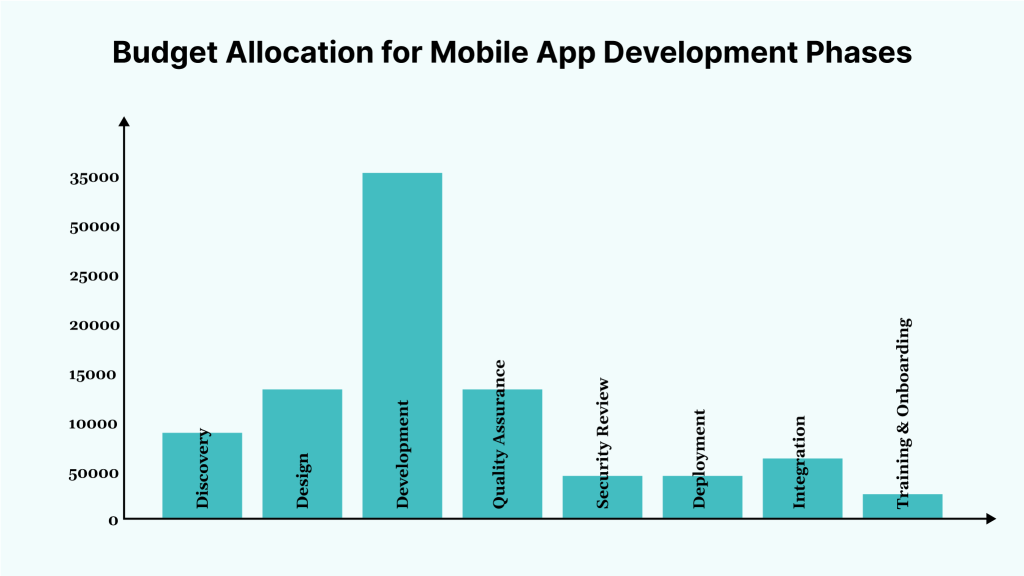
Let us assume the case of a retail enterprise looking into mobile app development. If their supposed budget is $900,000, this is how the cost will come across the steps in the process:
| Phase | Percentage of Budget | Estimated Cost |
| Discovery | 10 % | $90,000 |
| Design | 15 % | $135,000 |
| Development | 40 % | $360,000 |
| Quality Assurance | 15 % | $135,000 |
| Security Review | 5 % | $45,000 |
| Deployment | 5 % | $45,000 |
| Integration | 7 % | $63,000 |
| Training & Onboarding | 3 % | $27,000 |
| Total | 100 % | $900,000 |
Planning with a stage-by-stage breakdown helps enterprises allocate resources effectively and set clear expectations. Furthermore, there are some strategies you should be aware of.
Security, Compliance, & Data Strategies For Enterprise Mobile App Development
Successful enterprise mobile solutions must uphold rigorous security standards, align with relevant compliance regulations, and effectively manage data policies and procedures. This section outlines critical strategies to safeguard data and maintain enterprise-grade trust from the ground up.
Strong Authentication & Access Control
Every enterprise mobile app should integrate robust identity management. Multi‑factor authentication (MFA) and role-based access control (RBAC) ensure only authorized users can view or act on sensitive data.
Identity platforms like Azure AD or Okta help enforce single sign-on and streamline user lifecycle management. By implementing least‑privilege access, you reduce risk and maintain compliance when user roles change.
Secure Data Storage & Transmission
Encrypting data both in transit and at rest is non‑negotiable. Use TLS 1.2 or later for communication and AES-256 (or a stronger cipher) for stored data. Avoid saving any sensitive data in plain text or unsecured areas.
Secure containers, encrypted key stores, and app sandboxes are standard practices. This approach keeps sensitive information safe even on potentially compromised devices. API endpoints should validate all requests properly and reject unauthorized access at the edge.
Secure Coding & Continuous Testing
Apps must be built with secure code from the start. Validate and sanitize all inputs, avoid hard-coded secrets, and use vetted third-party libraries. Static code analysis tools can detect vulnerabilities early.
Continuous integration pipelines should include automated security testing. Penetration testing and manual audits are conducted before each release to ensure that vulnerabilities are identified and promptly addressed.
Device Management & Runtime Protection
Enterprises should deploy mobile device management (MDM) tools to control how apps behave on employee devices. Features such as remote wipe, corporate policy enforcement, and device posture checks help keep data secure on both BYOD and corporate devices.
Runtime application self-protection (RASP) further ensures that apps detect and block tampering or debugging in real-time.
Data Governance & Compliance Policies
Enterprises must establish clear data governance frameworks to ensure effective data management. Policies should define data collection, retention, encryption protocols, and access audits. Depending on geography and industry, compliance needs may include GDPR, HIPAA, or PCI DSS.
Aligning with frameworks such as ISO/IEC 27001, COBIT, or ISO/IEC 38500 strengthens governance and ensures regulatory compliance and readiness.
Ongoing Monitoring & Incident Response
Security strategy extends beyond launch. Implement logging and behavioral analytics to flag anomalous activity. Set thresholds that trigger alerts or lockdowns. Establish an incident response plan that outlines the steps to contain suspected breaches or device compromises.
Regular reviews and updates to security protocols help maintain effectiveness against evolving threats.
With strong authentication, encrypted data policies, secure engineering, device oversight, governance frameworks, and vigilant monitoring, enterprise mobile apps can meet the highest standards of security and compliance.
This holistic approach builds trust and minimizes operational risk as you scale. There are also several common challenges associated with this type of app development.
Overcoming Common Enterprise Mobile App Development Challenges
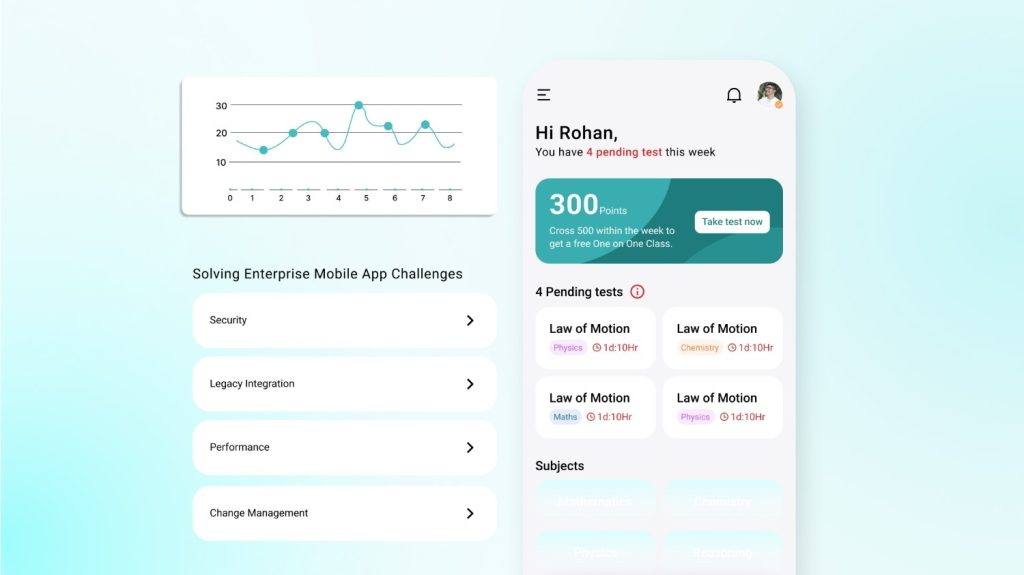
Even well-planned enterprise mobile apps face persistent hurdles. From tight security to sprawling legacy systems, managing these challenges is essential to maintain reliability and user satisfaction. Below, we explore four core challenge categories and guide how to resolve them effectively.
Security
Security remains a top concern, especially with sensitive enterprise data at stake. A well-known issue involves hard‑coded cloud access tokens in apps. Over half of enterprise apps tend to use shared tokens across multiple applications, exposing entire backend systems to attackers.
To overcome this, teams must apply temporary, expiring credentials and strict credential segmentation. Secure design, token rotation, and regular audits neutralize these vulnerabilities. User education, secure coding, and consistent penetration testing help maintain a proactive security stance.
Legacy Integration
Many enterprises rely on aging systems that lack standardized APIs or modern interfaces. This challenge makes integrating mobile apps complex and prone to errors. The solution lies in middleware, API abstraction layers, and phased modernization strategies.
Teams may wrap legacy systems with standardized APIs or apply enterprise application integration (EAI) tools that bridge older platforms to mobile apps. Incremental integration avoids disruptions while enabling gradual access to mobile services.
Performance
Apps must scale and perform flawlessly under load, even with a high volume of concurrent users or large datasets. Poor indexing, blocking API calls, or heavy UI elements can degrade performance, causing user frustration.
Address this by profiling performance early, caching vigorously, implementing asynchronous flows, and optimizing database queries. Use load and stress testing before launch. Continuous monitoring tools detect bottlenecks before they affect users. Maintaining high performance supports trust and adoption.
Change Management
Deploying an enterprise mobile app often involves shifts in workflows, system usage, and user expectations. Organizations may face slow adoption if culture and processes do not align. Solve this by engaging stakeholders early, providing training sessions, and offering continuous feedback loops.
Establish champions within teams to promote usage. Pair rollout phases with iterative improvements based on real user sentiment. Embedding new tools into daily habits requires planning and consistent support. Technology alone will not deliver change.
Addressing these critical issues proactively transforms risk into strength. Strong security, seamless legacy integration, robust performance, and guided change management help deliver enterprise mobility solutions that are reliable, usable, and trusted across large organizations.
DEVtrust: A Trusted Partner In Enterprise Mobile App Development
When selecting a development partner, both technical skill and strategic process are essential. DEVtrust integrates U.S.-based coordination with deep offshore execution in India. We offer full-service mobile expertise, from low-code acceleration to custom, secure, and scalable apps.
Low-code & No-code Options
DEVtrust delivers enterprise-ready mobile apps using configurable low-code platforms. These platforms reduce time to market. Their setups come with built-in security controls, versioning, and audit logs. They are ideal for rapid deployments and evolving feature sets.
Custom And High-Efficiency Solutions
For complex use cases, DEVtrust delivers full-stack custom development. We work with React Native, Ionic, and native iOS/Android, as well as backend services. Our mobile teams follow agile sprints and CI/CD pipelines. They align custom builds with performance, integrations, and UX goals.
Built-in Security Features
Security is central to DEVtrust’s architecture. We enforce role-based access, encrypted data storage, token rotation, and secure API gateways. We apply device attestation and remote wipe policies when needed, ensuring every mobile app meets enterprise-grade compliance.
Feature Comparison – DEVtrust vs Other Partners
| Feature Area | DEVtrust | Typical Vendor |
| U.S. Coordination Center | ✅ | — |
| Offshore Delivery (India) | ✅ | ✅ |
| Low‑code / No‑code Acceleration | ✅ | ✅ |
| Full‑stack Custom Builds | ✅ | ✅ |
| Agile & CI/CD Workflow | ✅ | ✅ |
| Strong Security & Compliance | ✅ | ⚠️ |
| Role-based Access / Device Trust | ✅ | ⚠️ |
DEVtrust uniquely combines rapid low-code delivery with robust custom development, all within a secure and scalable framework. Our U.S.-based coordination ensures alignment with enterprise standards, while offshore execution brings cost efficiency without sacrificing quality.
Conclusion
Developing an enterprise mobile app in 2025 requires a comprehensive lifecycle approach that encompasses everything from defining goals and security to deployment and optimization.
When executed with rigor, enterprise apps become strategic assets, enhancing workflows, accelerating decision-making, and transforming data into actionable insights. The ultimate success lies in executing a disciplined process, enforcing strong security, and managing change carefully.
DEVtrust offers a unique blend of U.S.-centered coordination and offshore precision, featuring both low-code accelerators and fully custom, enterprise-grade applications. Our approach ensures modular scalability, secure architecture, and seamless deployment.
If you are ready to build secure, scalable, and future-ready mobile solutions, get in touch with DEVtrust today. Let us guide your project from vision to operational success.
Enterprise Mobile App Development In 2025: Types, Considerations, & Process
Create scalable, secure enterprise mobile apps in 2025. Learn strategy, platforms, process, and best practices to build future-ready apps that drive real value.
Contact Us

